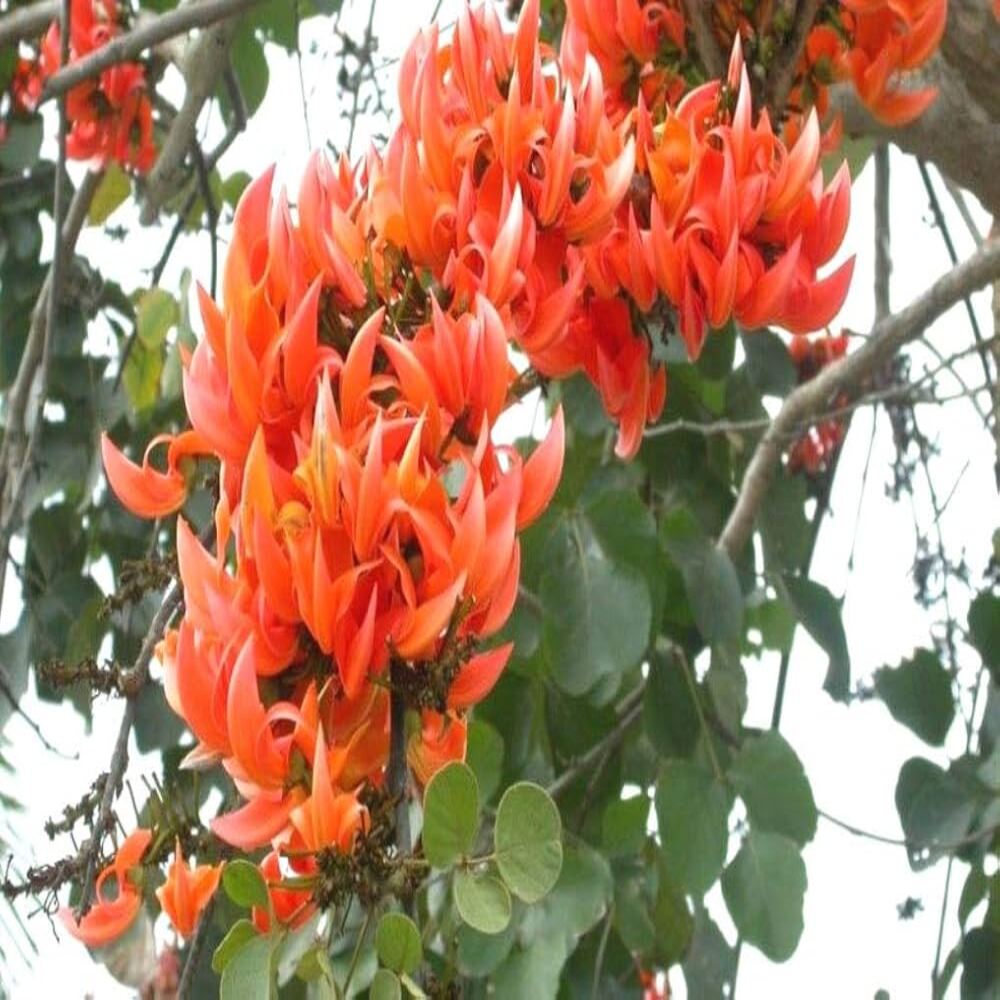The “Flame of the Forest” typically refers to Butea monosperma, a striking and beautiful tree native to tropical and subtropical regions of the Indian subcontinent and Southeast Asia. It is known for its vibrant orange-red flowers that resemble flames, giving it its common name.
Description
- Scientific Name: Butea monosperma
- Common Names: Flame of the Forest, Palash, Dhak, Bastard Teak
- Appearance: Butea monosperma is a medium-sized deciduous tree, growing up to 15 meters (about 50 feet) tall. It has a rough, grayish bark and a broad, spreading crown.
- Flowers: The tree is most famous for its bright orange or red flowers that bloom in dense clusters. These flowers appear in late winter and early spring, often before the leaves, creating a dramatic and fiery appearance.
- Leaves: The leaves are trifoliate, meaning each leaf consists of three leaflets. They are large, leathery, and shed during the flowering season, making the flowers stand out even more.
Habitat and Distribution
- Native Range: Butea monosperma is native to the Indian subcontinent, including India, Bangladesh, Nepal, and Sri Lanka. It is also found in parts of Southeast Asia.
- Habitat: It typically grows in dry, open forests, grasslands, and along the edges of fields. The tree is well-adapted to a variety of soils but prefers well-drained, sandy, or loamy soils.
Cultural and Medicinal Significance
- Cultural Importance: In India, the Flame of the Forest is highly revered and is associated with several cultural and religious traditions. It is considered sacred in Hinduism and is often used in rituals and festivals.
- Medicinal Uses: The tree has various uses in traditional medicine. The flowers, leaves, seeds, and gum from the tree are used to treat a range of ailments, including skin diseases, diarrhea, and eye conditions.
- Dye: The flowers of Butea monosperma are also used to produce a natural dye, which is sometimes used in the Holi festival, a popular spring festival in India where people throw colored powders at each other.
Environmental and Ecological Role
- Pollinator Attraction: The bright flowers of the Flame of the Forest are known to attract birds, especially parrots and sunbirds, as well as insects, which help in pollination.
- Soil Improvement: The tree has a symbiotic relationship with certain soil bacteria that fix nitrogen, helping to improve soil fertility.
Other Uses
- Timber: Although the wood of Butea monosperma is not very strong, it is sometimes used for making agricultural tools, carts, and other implements.
- Lac Cultivation: The tree is also used for cultivating lac, a resin secreted by certain insects that is used in making shellac.
The Flame of the Forest is not only a beautiful and iconic tree but also an important species in the ecosystems where it grows, contributing to biodiversity and supporting various forms of life.







Reviews
There are no reviews yet.